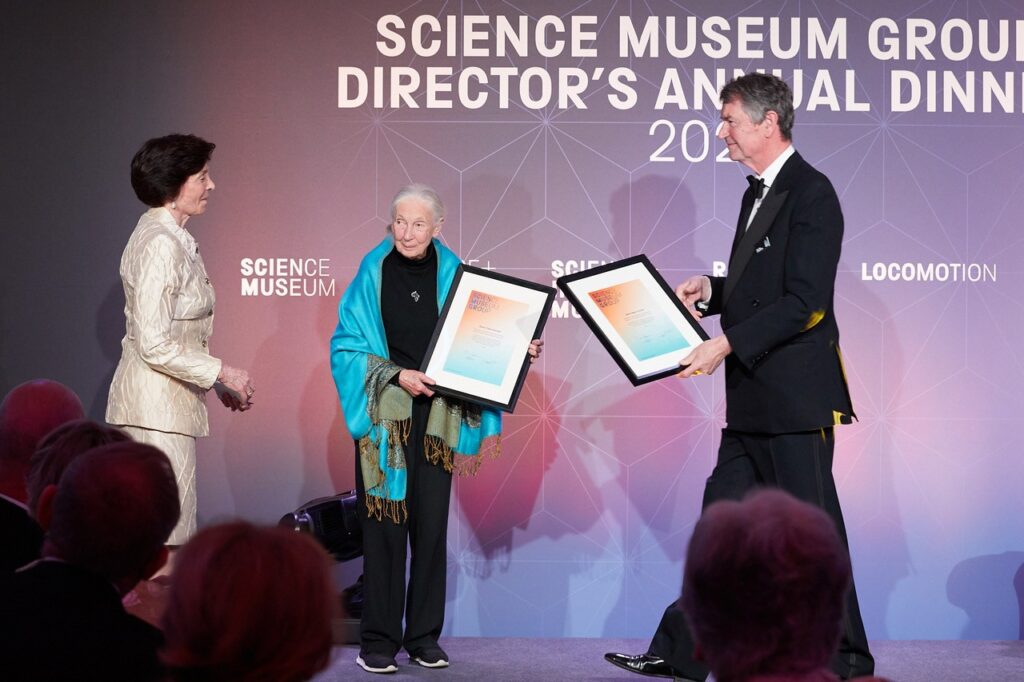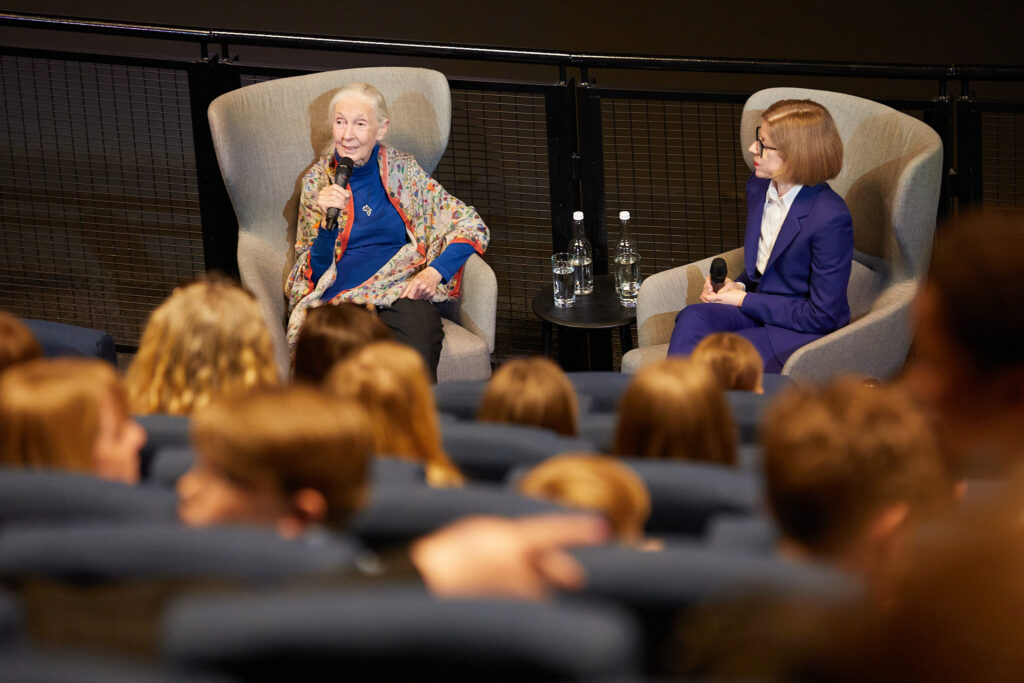Guests at the Annual Dinner heard from Dr Chieko Asakawa, an IBM Fellow and Chief Executive Director of Miraikan, Japan’s National Museum of Emerging Science and Innovation. Dr Asakawa’s pioneering work focuses on accessibility research and enhancing the experiences of people who are blind through AI and other technologies.

Telling the audience how her career had begun at IBM, she described how her ambition for technology to ‘replace sight… was kind of a dream’ but recent technological advances had opened up transformational possibilities around accessibility such as the AI suitcase. ‘I decided,’ she said: ‘the time had come to bring science fiction to life.’
Each year the Science Museum Group awards Fellowships to individuals who have made a major contribution to science, philanthropy or the history of science. Previous recipients include numerous Nobel prize winners, astronauts and Sir David Attenborough.
At the Annual Dinner, Dr Jane Goodall and Dame Mary Archer were each presented with Fellowships by Sir Tim Laurence, Chair of Trustees of the Science Museum Group.

Dame Mary Archer, our previous Chair of Trustees, was awarded a Fellowship in recognition of her research on chemistry and solar energy, her devotion to the health sector, public service and the wider scientific community as well as her tireless commitment to the Science Museum Group.
Describing how she had taken pleasure in awarding Fellowships during her nine-year tenure as Chair, Dame Mary joked it was better still to receive one. She told the audience that her long involvement with the Science Museum Group had been one of the greatest pleasures of her life.
Dr Goodall was awarded a Fellowship in recognition of her work as a conservationist and primatologist, most notably her long running studies of chimpanzees in the forests of Gombe, Tanzania, as well as her contribution to the protection of biodiversity.
‘My main reason for hope today,’ Dr Goodall said, ‘is young people’, as she emphasised the importance of engaging and empowering the next generation through activities such as the Roots and Shoots programme she founded and spaces such as the Science Museum adding that ‘to receive this Fellowship from the Science Museum is a very great honour.’
Earlier in the day Dr Goodall attended a screening of her film, Reasons for Hope, and a Q&A with the museum’s Deputy Director, Dr Julia Knights, answering questions in front of 300 local school children.

During the Q&A, Dr Goodall told the young people: ‘When you start taking action, rolling up your sleeves, you feel like “gosh I can make a difference”. If millions of people make the world just a little bit better then think what we can achieve.’
Dr Goodall also spoke about the challenges she faced as a woman in science in the 1960s, ‘The scientists at Cambridge didn’t listen to me when I arrived there – it was rare for women to do science back then, that’s all changed now.’
She shared her suggestion for the one thing people can do to make a difference for the future – moving to a plant-based diet – and answered several questions about animals, including sharing that the animal that needs the most help is the pangolin, ‘They’re the most heavily hunted animals in the world so we need to protect them.’

Speaking about her lifelong fascination with chimpanzees, Dr Goodall described an amazing moment of acceptance: ‘When the chimpanzee David Graybeard allowed me to get closer – he was a very calm, gentle chimpanzee. He was a leader of the others and so gradually the rest of the group thought “well she can’t be so scary after all”. There was an amazing moment when David Graybeard took a banana from my hand and let me groom him.’
The most moving thing Dr Goodall has seen a chimpanzee do was the lifesaving act of a twelve-year-old male chimpanzee, who had lost his mother, adopting a three-year-old baby chimpanzee whose mother had recently died. The twelve-year-old let the younger chimp share his nest and saved his life.